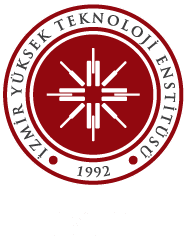Araştırma Görevlileri
Araş. Gör. Murat Demirel

Eğitim
Lisans: İzmir Yüksek Teknoloji Enstitüsü, Makina Mühendisliği, 2015
Yüksek Lisans: İzmir Yüksek Teknoloji Enstitüsü, Makina Mühendisliği, 2018
Doktora: İzmir Yüksek Teknoloji Enstitüsü, Makina Mühendisliği (Devam ediyor)
Çalışma Alanları
- Mekanizma Tekniği
- Kablo Kısıtlı Paralel Robotlar
- Katlanabilir Yapılar
- +90 232 750 6752
- +90 232 750 6701
- Makina Mühendisliği Binası, Rasim Alizade Mekatronik Lab. (Z31)
2023 |
Demirel, Murat; Kiper, Gökhan; Carbone, Giuseppe; Ceccarelli, Marco Design of a novel hybrid cable-constrained parallel leg mechanism for biped walking machines Journal Article Robotica, 41 (6), pp. 1778 – 1793, 2023, (All Open Access, Green Open Access). @article{Demirel20231778, title = {Design of a novel hybrid cable-constrained parallel leg mechanism for biped walking machines}, author = {Murat Demirel and Gökhan Kiper and Giuseppe Carbone and Marco Ceccarelli}, url = {https://www.scopus.com/inward/record.uri?eid=2-s2.0-85182028851&doi=10.1017%2fS0263574723000140&partnerID=40&md5=60745b93d1c9dbaf0d172fdcc365338f}, doi = {10.1017/S0263574723000140}, year = {2023}, date = {2023-01-01}, journal = {Robotica}, volume = {41}, number = {6}, pages = {1778 – 1793}, abstract = {In this paper, a novel cable-constrained parallel mechanism is presented as a lightweight, low-cost leg mechanism design for walking machines to be used on flat surfaces. The proposed leg mechanism has three translational degrees of freedom. It is based on two specific hybrid kinematic topologies being herewith proposed. The paper reports the kinematic analysis formulation and a position performance evaluation to confirm the main characteristics of the proposed solutions. A 3D CAD model and simulations are carried out to demonstrate the feasibility of the proposed design for performing a human-like gait trajectory. A prototype has been built, and preliminarily tests have been conducted to confirm the motion capabilities of the proposed mechanism design. Then a second, enhanced prototype has been designed and built. An experimental validation is carried out for tracking a planar walking trajectory with the built prototypes by using a real-time PCI controller. Results are presented to validate the operation characteristics of the proposed mechanism and to prove its feasibility for legged walking machines. © The Author(s), 2023.}, note = {All Open Access, Green Open Access}, keywords = {}, pubstate = {published}, tppubtype = {article} } In this paper, a novel cable-constrained parallel mechanism is presented as a lightweight, low-cost leg mechanism design for walking machines to be used on flat surfaces. The proposed leg mechanism has three translational degrees of freedom. It is based on two specific hybrid kinematic topologies being herewith proposed. The paper reports the kinematic analysis formulation and a position performance evaluation to confirm the main characteristics of the proposed solutions. A 3D CAD model and simulations are carried out to demonstrate the feasibility of the proposed design for performing a human-like gait trajectory. A prototype has been built, and preliminarily tests have been conducted to confirm the motion capabilities of the proposed mechanism design. Then a second, enhanced prototype has been designed and built. An experimental validation is carried out for tracking a planar walking trajectory with the built prototypes by using a real-time PCI controller. Results are presented to validate the operation characteristics of the proposed mechanism and to prove its feasibility for legged walking machines. © The Author(s), 2023. |
Araş. Gör. İsmail Gürkan Demirkıran
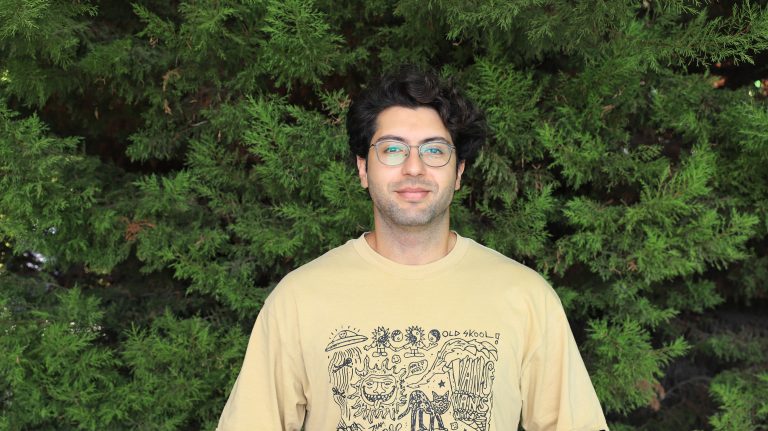
Eğitim
Lisans: Eskişehir Osmangazi Üniversitesi, Makine Mühendisliği, 2014
Yüksek Lisans: “ İzmir Yüksek Teknoloji Enstitüsü, Enerji Mühendisliği, 2020
Doktora: İzmir Yüksek Teknoloji Enstitüsü, Makina Mühendisliği (Devam ediyor)
Çalışma Alanları
- Enerji Depolama
- Orta/Yüksek Sıcaklık Faz Değiştiren Malzemeler (FDM)
- Pasif Isıl Yönetim
- Hesaplamalı Akışkanlar Dinamiği (HAD)
- +90 232 750 6744
- +90 232 750 6701
- Makina Mühendisliği Binası, Isı ve Kütle Transferi Araştırma Lab. (142)
2021 |
Demirkiran, Ismail Gurkan; Cetkin, Erdal Emergence of rectangular shell shape in thermal energy storage applications: Fitting melted phase changing material in a fixed space Journal Article JOURNAL OF ENERGY STORAGE, 37 , 2021. @article{WOS:000641410200002, title = {Emergence of rectangular shell shape in thermal energy storage applications: Fitting melted phase changing material in a fixed space}, author = {Ismail Gurkan Demirkiran and Erdal Cetkin}, doi = {10.1016/j.est.2021.102455}, year = {2021}, date = {2021-05-01}, journal = {JOURNAL OF ENERGY STORAGE}, volume = {37}, abstract = {Here we document the effect of heat transfer fluid (HTF) tube position and shell shape on the melting time and sensible energy requirement for melting a phase change material (PCM) in a multitube latent heat thermal energy storage (LHTES) application. Tube location and shell shape are essential as the shape of the melted region, i.e. similar to the boundary layer, affects convective heat transfer performance. HTF tube total area is fixed in all cases to have the same amount of PCM. In order to eliminate the effect of heat transfer surface area variation, results of two- and four-tube configurations were compared within themselves. Liquid fraction, sensible enthalpy content, and latent/sensible enthalpy ratio relative to time were documented for two and four HTF configurations in various shell shape and tube locations. Results show that eccentric two tubes with rectangular shell decreases melting time and sensible energy requirement from 67 min to 32 min and from 161.8 kJ/kg to 136.3 kJ/kg for 72.3% liquid fraction, respectively, in comparison to the concentric tubes with the circular shell. When the number of HTF tubes increases to four, then the required melting time and sensible energy decrease 80% and 3.8%, respectively, for PCM to melt completely as the concentric tubes and circular shell is replaced with eccentric tubes and rectangular shell. Results of liquid fraction variation relative to time show that S-curve of melting becomes steeper if PCM distribution is such that the intersection of melted regions is delayed. Therefore, melted PCM regions could be packed into a shell that minimizes melting time and required sensible energy. Even rectangular shell shape increases the heat transfer surface (increased heat loss rate) because melting time has decreased greatly, total energy lost to the ambient from the surfaces of shell decreases. Eccentricity slows down the solidification process but due to increased heat loss rate from the surface, rectangular shell enables faster solidification than circular shell shape. There is a trade off in between solidification time and heat loss energy for rectangular channels which can be optimized by selecting proper insulation thickness. Overall, the results show that without any thermal conductivity enhancement (TCE) method, melting performance and latent heat storage capability can be significantly enhanced as decreasing the sensible heat storage by fitting the melted PCM regions into a fixed space for the applications where charging speed is lot faster than discharging.}, keywords = {}, pubstate = {published}, tppubtype = {article} } Here we document the effect of heat transfer fluid (HTF) tube position and shell shape on the melting time and sensible energy requirement for melting a phase change material (PCM) in a multitube latent heat thermal energy storage (LHTES) application. Tube location and shell shape are essential as the shape of the melted region, i.e. similar to the boundary layer, affects convective heat transfer performance. HTF tube total area is fixed in all cases to have the same amount of PCM. In order to eliminate the effect of heat transfer surface area variation, results of two- and four-tube configurations were compared within themselves. Liquid fraction, sensible enthalpy content, and latent/sensible enthalpy ratio relative to time were documented for two and four HTF configurations in various shell shape and tube locations. Results show that eccentric two tubes with rectangular shell decreases melting time and sensible energy requirement from 67 min to 32 min and from 161.8 kJ/kg to 136.3 kJ/kg for 72.3% liquid fraction, respectively, in comparison to the concentric tubes with the circular shell. When the number of HTF tubes increases to four, then the required melting time and sensible energy decrease 80% and 3.8%, respectively, for PCM to melt completely as the concentric tubes and circular shell is replaced with eccentric tubes and rectangular shell. Results of liquid fraction variation relative to time show that S-curve of melting becomes steeper if PCM distribution is such that the intersection of melted regions is delayed. Therefore, melted PCM regions could be packed into a shell that minimizes melting time and required sensible energy. Even rectangular shell shape increases the heat transfer surface (increased heat loss rate) because melting time has decreased greatly, total energy lost to the ambient from the surfaces of shell decreases. Eccentricity slows down the solidification process but due to increased heat loss rate from the surface, rectangular shell enables faster solidification than circular shell shape. There is a trade off in between solidification time and heat loss energy for rectangular channels which can be optimized by selecting proper insulation thickness. Overall, the results show that without any thermal conductivity enhancement (TCE) method, melting performance and latent heat storage capability can be significantly enhanced as decreasing the sensible heat storage by fitting the melted PCM regions into a fixed space for the applications where charging speed is lot faster than discharging. |
Araş. Gör. İbrahimcan Görgülü
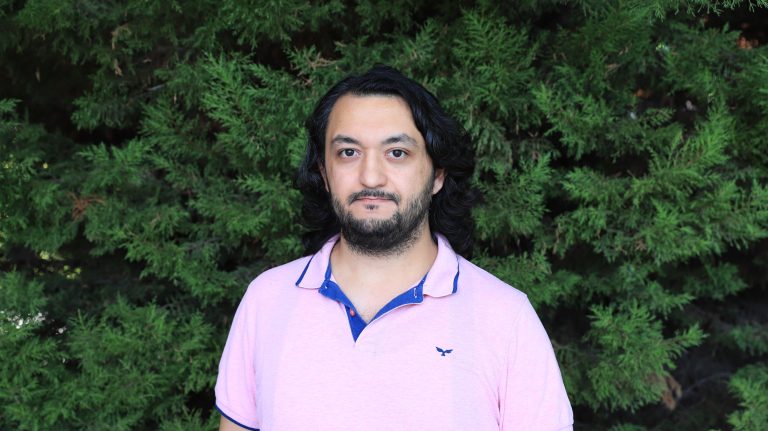
Eğitim
Lisans: Gediz Üniversitesi, Makina Mühendisliği, 2015
Yüksek Lisans: İzmir Yüksek Teknoloji Enstitüsü, Makina Mühendisliği, 2018
Doktora: İzmir Yüksek Teknoloji Enstitüsü, Makina Mühendisliği (Devam Ediyor)
Çalışma Alanları
- Haptik
- Direngenlik
- Kontrol
- +90 232 750 6795
- +90 232 750 6701
- Makina Mühendisliği Binası, İnsan Robot Etkileşimi Lab. (Z56)
2023 |
Gorgulu, Ibrahimcan; Dede, Mehmet Ismet Can; Kiper, Gokhan Stiffness modeling of a 2-DoF over-constrained planar parallel mechanism Journal Article MECHANISM AND MACHINE THEORY, 185 , 2023. @article{WOS:000966404700001, title = {Stiffness modeling of a 2-DoF over-constrained planar parallel mechanism}, author = {Ibrahimcan Gorgulu and Mehmet Ismet Can Dede and Gokhan Kiper}, doi = {10.1016/j.mechmachtheory.2023.105343}, year = {2023}, date = {2023-07-01}, journal = {MECHANISM AND MACHINE THEORY}, volume = {185}, abstract = {Stiffness model acquisition of over-constrained parallel mechanisms is relatively difficult since they have more than necessary kinematic loops. In this study, a stiffness modeling solution for over-constrained parallel mechanisms is proposed while considering the computational cost efficiency. Three contributions of the paper are: (1) Presenting the stiffness modeling procedure for serially connected closed-loop structures by using the Virtual Joint Method (2) Considering the effect of dynamic auxiliary forces and dynamic external forces on the mobile platform's deflection and achieving a direct solution by using superposition principle (3) A model fitting procedure for modifying the stiffness coefficients to comply with the experimental data. A 2 degrees-of-freedom over-constrained parallel mechanism is investigated as a case study. However, the proposed stiffness model is 6-DoF since compliant deflections occur in any direction. A finite element analysis and an experimental study verify the model's results.}, keywords = {}, pubstate = {published}, tppubtype = {article} } Stiffness model acquisition of over-constrained parallel mechanisms is relatively difficult since they have more than necessary kinematic loops. In this study, a stiffness modeling solution for over-constrained parallel mechanisms is proposed while considering the computational cost efficiency. Three contributions of the paper are: (1) Presenting the stiffness modeling procedure for serially connected closed-loop structures by using the Virtual Joint Method (2) Considering the effect of dynamic auxiliary forces and dynamic external forces on the mobile platform's deflection and achieving a direct solution by using superposition principle (3) A model fitting procedure for modifying the stiffness coefficients to comply with the experimental data. A 2 degrees-of-freedom over-constrained parallel mechanism is investigated as a case study. However, the proposed stiffness model is 6-DoF since compliant deflections occur in any direction. A finite element analysis and an experimental study verify the model's results. |
2020 |
Gorgulu, Ibrahimcan; Carbone, Giuseppe; Dede, Can M I Time efficient stiffness model computation for a parallel haptic mechanism via the virtual joint method Journal Article MECHANISM AND MACHINE THEORY, 143 , 2020, ISSN: 0094-114X. @article{ISI:000502050800019, title = {Time efficient stiffness model computation for a parallel haptic mechanism via the virtual joint method}, author = {Ibrahimcan Gorgulu and Giuseppe Carbone and Can M I Dede}, doi = {10.1016/j.mechmachtheory.2019.103614}, issn = {0094-114X}, year = {2020}, date = {2020-01-01}, journal = {MECHANISM AND MACHINE THEORY}, volume = {143}, abstract = {Haptic devices are used for displaying a range of mechanical impedance values to the user. This impedance is regulated by a real-time control loop depending on the position information of the end-effector, which is usually acquired indirectly by using forward kinematics equations. Nevertheless, the kinematic model is insufficient to obtain accurate values if there are non-negligible compliant displacements. This gives a strong motivation for implementing a real-time stiffness model in the haptic control loop for improving its accuracy. Additionally, stiffness performance indices can be used at the design stage for enhancing the haptic devices impedance range within optimal design procedures. Fast solutions of a stiffness model are required for a real-time control as well as for decreasing the optimization time during a design process with a trade-off between accuracy and computational costs. In this study, we propose a computation time-efficient stiffness analysis of a parallel haptic device mechanism. The accuracy and computational costs of the proposed model are calculated and compared with a model that is obtained via a finite element method to demonstrate the effectiveness of the proposed approach with the desired real-time and accuracy performance. (C) 2019 Elsevier Ltd. All rights reserved.}, keywords = {}, pubstate = {published}, tppubtype = {article} } Haptic devices are used for displaying a range of mechanical impedance values to the user. This impedance is regulated by a real-time control loop depending on the position information of the end-effector, which is usually acquired indirectly by using forward kinematics equations. Nevertheless, the kinematic model is insufficient to obtain accurate values if there are non-negligible compliant displacements. This gives a strong motivation for implementing a real-time stiffness model in the haptic control loop for improving its accuracy. Additionally, stiffness performance indices can be used at the design stage for enhancing the haptic devices impedance range within optimal design procedures. Fast solutions of a stiffness model are required for a real-time control as well as for decreasing the optimization time during a design process with a trade-off between accuracy and computational costs. In this study, we propose a computation time-efficient stiffness analysis of a parallel haptic device mechanism. The accuracy and computational costs of the proposed model are calculated and compared with a model that is obtained via a finite element method to demonstrate the effectiveness of the proposed approach with the desired real-time and accuracy performance. (C) 2019 Elsevier Ltd. All rights reserved. |
Araş. Gör. Fırat Kara
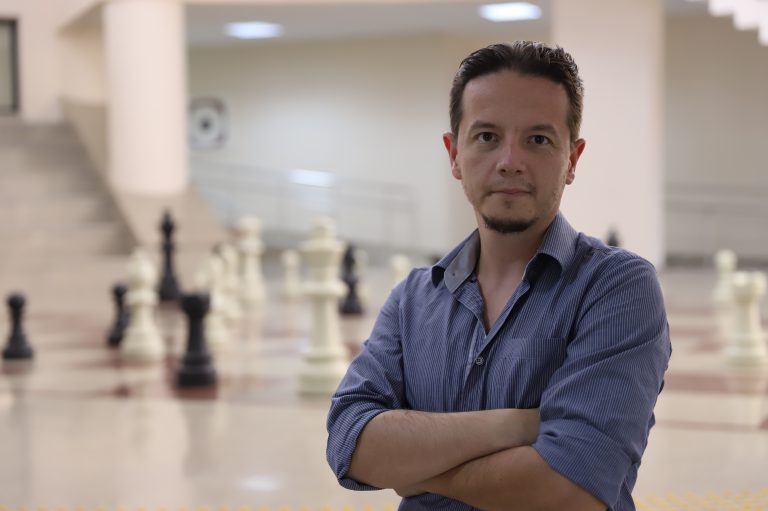
Eğitim
Lisans: Pamukkale Üniversitesi, Makine Mühendisliği, 2013
Yüksek Lisans: Van Yüzüncü Yıl Üniversitesi, Makine Mühendisliği, 2019
Doktora: İzmir Yüksek Teknoloji Enstitüsü, Makina Mühendisliği (Devam Ediyor)
Çalışma Alanları
- Mekanizmalar
- Mekanizmaların Dinamik Analizi ve Kontrolü
- +90 232 750 6757
- +90 232 750 6701
- Makina Mühendisliği Binası, Modelleme ve Prototipleme Lab. (Z57)
Araş. Gör. Sefa Furkan Küçükoğlu
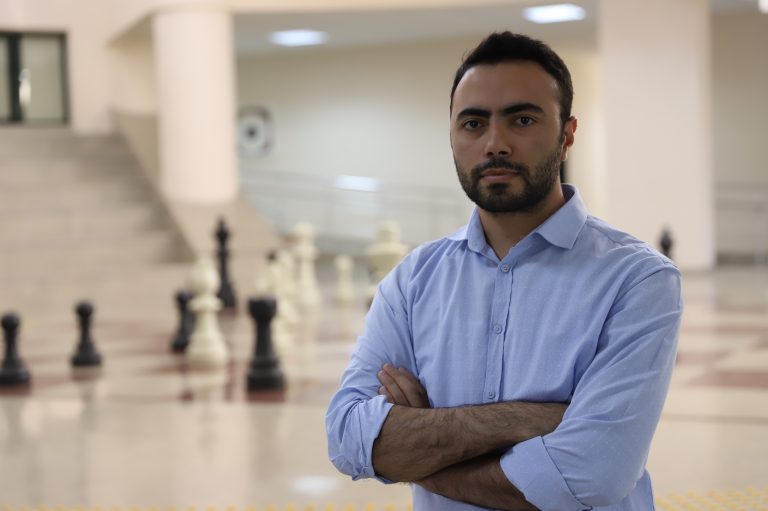
Eğitim
Lisans: Atatürk Üniversitesi, Elektrik-Elektronik Mühendisliği
Doktora: İzmir Yüksek Teknoloji Enstitüsü, Makina Mühendisliği (Devam Ediyor)
Çalışma Alanları
- Haptik
- Yapay Zeka
- +90 232 750 6751
- +90 232 750 6701
- Makina Mühendisliği Binası, Robotik Lab. (Z30)
Araş. Gör. Ahmet Devlet Özçelik
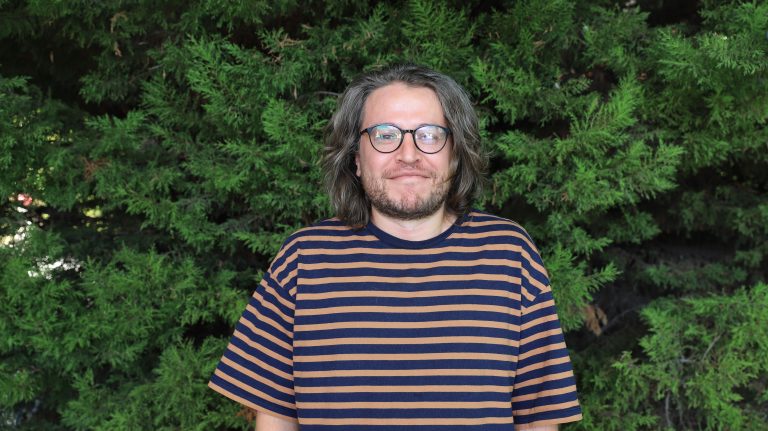
Eğitim
Lisans: TOBB Ekonomi ve Teknoloji Üniversitesi, Makine Mühendisliği Bölümü, 2018
Yüksek Lisans: Gebze Teknik Üniversitesi, Makina Mühendisliği, 2023
Doktora: İzmir Yüksek Teknoloji Enstitüsü, Makina Mühendisliği (Devam Ediyor)
Çalışma Alanları
- Gaz Türbinleri
- Yapay Zeka
- +90 232 750 6718
- +90 232 750 6701
- Makina Mühendisliği Binası, Akışkanlar Mekaniği Laboratuvar. (Z64)
Araş. Gör. Merve Özkahya
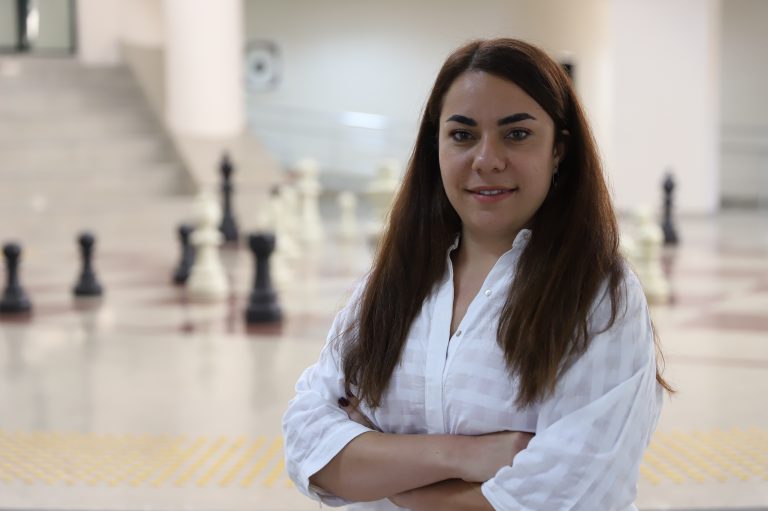
Eğitim
Lisans: İzmir Yüksek Teknoloji Enstitüsü, Makina Mühendisliği, 2016
Yüksek Lisans: İzmir Yüksek Teknoloji Enstitüsü, Makina Mühendisliği, 2019
Doktora: İzmir Yüksek Teknoloji Enstitüsü, Makina Mühendisliği (Devam Ediyor)
Çalışma Alanları
- Mekanizmalar
- Makina Dinamiği
- Mekanizmalarda Dengeleme
- +90 232 750 6752
- +90 232 750 6701
- Makina Mühendisliği Binası, Rasim Alizade Mekatronik Lab. (Z31)
2017 |
Kiper, Gokhan; Dede, Mehmet Ismet Can; Maaroof, Omar W; Ozkahya, Merve Function generation with two loop mechanisms using decomposition and correction method Journal Article MECHANISM AND MACHINE THEORY, 110 , pp. 16-26, 2017, ISSN: 0094-114X. @article{ISI:000394063500002, title = {Function generation with two loop mechanisms using decomposition and correction method}, author = {Gokhan Kiper and Mehmet Ismet Can Dede and Omar W Maaroof and Merve Ozkahya}, doi = {10.1016/j.mechmachtheory.2016.12.004}, issn = {0094-114X}, year = {2017}, date = {2017-04-01}, journal = {MECHANISM AND MACHINE THEORY}, volume = {110}, pages = {16-26}, abstract = {Method of decomposition has been successfully applied to function generation with multi-loop mechanisms. For a two-loop mechanism, a function y = f(x) can be decomposed into two as w = g(x) and y = h(w) = h(g(x)) = f(x). This study makes use of the method of decomposition for two loop mechanisms, where the errors from each loop are forced to match each other. In the first loop, which includes the input of the mechanism, the decomposed function (g) is generated and the resulting structural error is determined. Then, for the second loop, the desired output of the function (f) is considered as an input and the structural error of the decomposed function (g) is determined. By matching the obtained structural errors, the final error in the output of the mechanism is reduced. Three different correction methods are proposed. The first method has three precision points per loop, while the second method has four. In the third method, the extrema of the errors from both loops are matched. The methods are applied to a Watt II type planar six-bar linkage for demonstration. Several numerical examples are worked out and the results are compared with the results in the literature.}, keywords = {}, pubstate = {published}, tppubtype = {article} } Method of decomposition has been successfully applied to function generation with multi-loop mechanisms. For a two-loop mechanism, a function y = f(x) can be decomposed into two as w = g(x) and y = h(w) = h(g(x)) = f(x). This study makes use of the method of decomposition for two loop mechanisms, where the errors from each loop are forced to match each other. In the first loop, which includes the input of the mechanism, the decomposed function (g) is generated and the resulting structural error is determined. Then, for the second loop, the desired output of the function (f) is considered as an input and the structural error of the decomposed function (g) is determined. By matching the obtained structural errors, the final error in the output of the mechanism is reduced. Three different correction methods are proposed. The first method has three precision points per loop, while the second method has four. In the third method, the extrema of the errors from both loops are matched. The methods are applied to a Watt II type planar six-bar linkage for demonstration. Several numerical examples are worked out and the results are compared with the results in the literature. |
Araş. Gör. Batuhan Özkurt
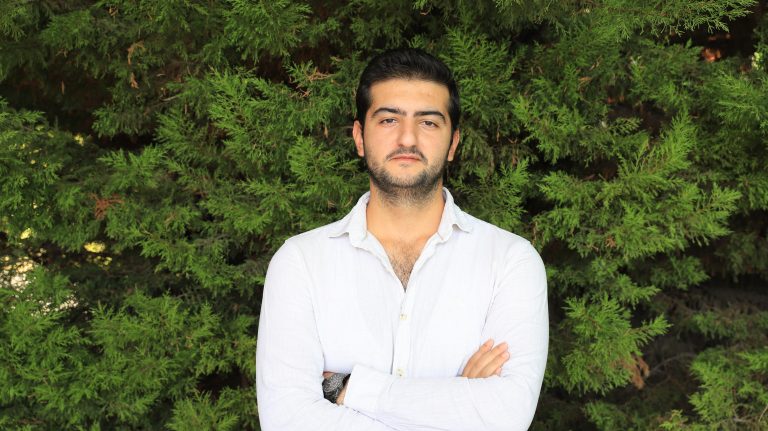
Eğitim
Lisans: Yıldız Teknik Üniversitesi, Mekatronik Mühendisliği Bölümü, 2022
Yüksek Lisans: İzmir Yüksek Teknoloji Enstitüsü, Makina Mühendisliği (Devam Ediyor)
Çalışma Alanları
Kontrol
- +90 232 750 6795
- +90 232 750 6701
- Makina Mühendisliği Binası, İnsan Robot Etkileşimi Lab. (Z56)
Araş. Gör. Erkan Paksoy
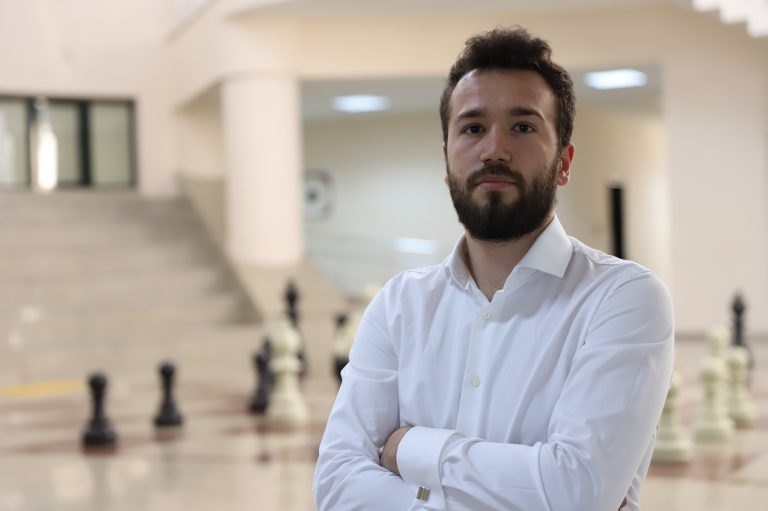
Eğitim
Lisans: İzmir Yüksek Teknoloji Enstitüsü, Makina Mühendisliği, 2018
Yüksek Lisans: İzmir Yüksek Teknoloji Enstitüsü, Makina Mühendisliği (Devam Ediyor)
Çalışma Alanları
- Robotik ve Kontrol
- Mekanizmalarda Direngenlik Analizi
- +90 232 750 6757
- +90 232 750 6701
- Makina Mühendisliği Binası, Modelleme ve Prototipleme Lab. (Z57)
Araş. Gör. Umut Ege Samancıoğlu
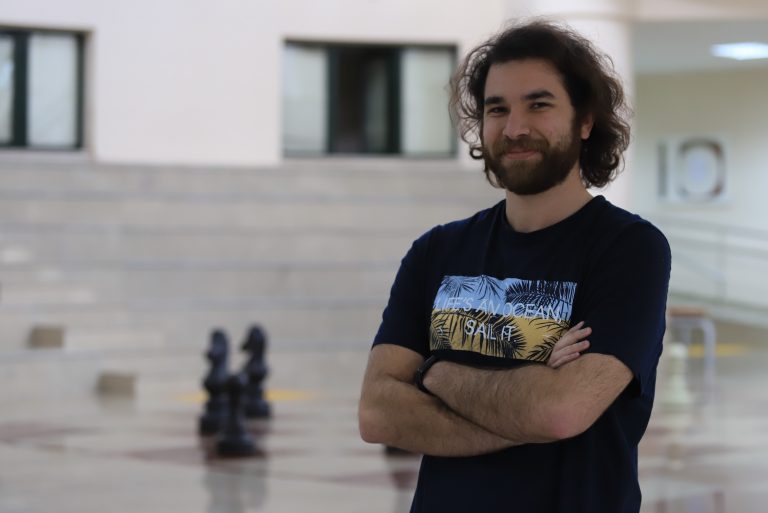
Eğitim
Lisans: İzmir Yüksek Teknoloji Enstitüsü, Makina Mühendisliği, 2014
Yüksek Lisans: İzmir Yüksek Teknoloji Enstitüsü, Makina Mühendisliği, (Devam Ediyor)
Çalışma Alanları
- Mikro karıştırıcılar
- Hesaplamalı Akışkanlar Dinamiği
- +90 232 750 6744
- +90 232 750 6701
- Makina Mühendisliği Binası, Isı ve Kütle Transferi Araştırma Lab. (142)
Araş. Gör. Mehmet Yalçın Sırmalılar
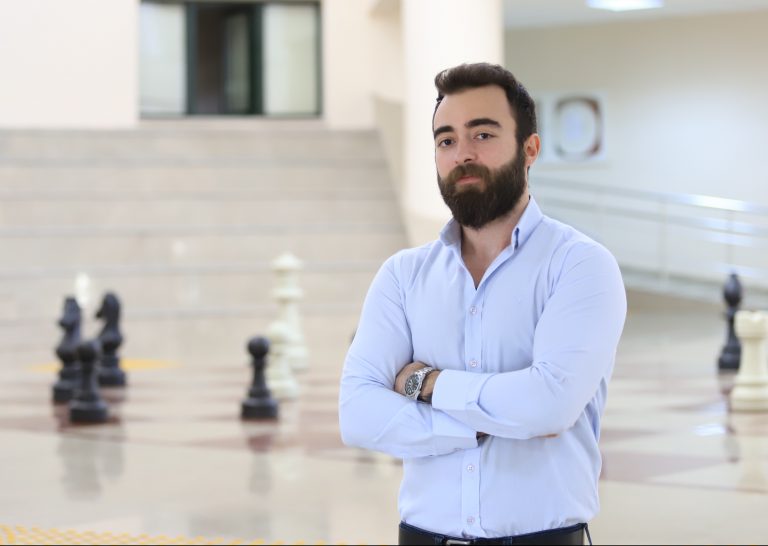
Eğitim
Lisans: Manisa Celal Bayar Üniversitesi, Makina Mühendisliği, 2021
Yüksek Lisans: İzmir Yüksek Teknoloji Enstitüsü, Makina Mühendisliği, (Devam Ediyor)
Çalışma Alanları
- Sonlu Elemanlar Analizi
- Biyomekanik
- Medikal İmplantların Optimizasyonu
- Cisimlerin Mukavemeti
- +90 232 750 6718
- +90 232 750 6701
- Makina Mühendisliği Binası Araştırma Görevlisi Ofisi (Z46)
Araş. Gör. Senagül Tunca Taşkıran
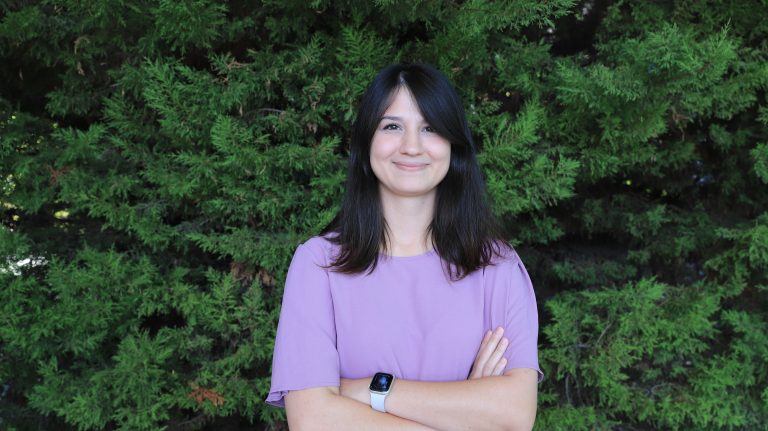
Eğitim
Lisans: Dokuz Eylül Üniversitesi, Metalurji ve Malzeme Mühendisliği, 2019
Yüksek Lisans: İzmir Yüksek Teknoloji Enstitüsü, Makina Mühendisliği, 2023
Doktora: İzmir Yüksek Teknoloji Enstitüsü, Makina Mühendisliği (Devam Ediyor)
Çalışma Alanları
- Kompozit Malzemeler
- Malzemelerin Mekanik Davranışları
- Malzeme Karakterizasyonu
- +90 232 750 6704
- +90 232 750 6701
- Makina Mühendisliği Binası, Kompozit Araştırma Lab. (Z36)
Araş. Gör. Büşra İrem Türkpençesi
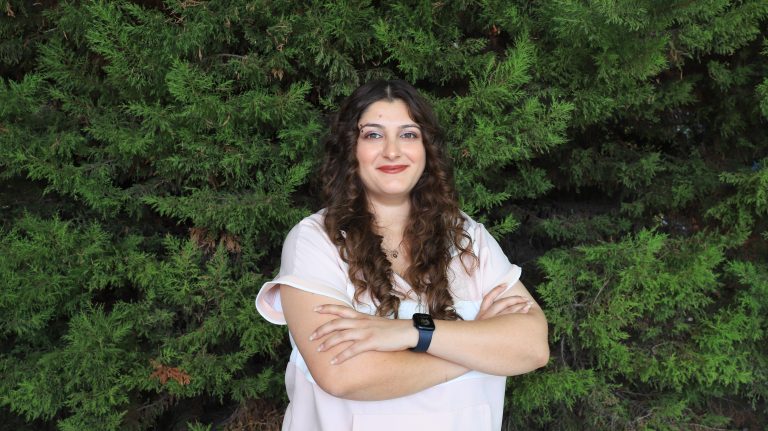
Eğitim
Lisans: İzmir Yüksek Teknoloji Enstitüsü, Kimya Mühendisliği, 2021 / Yan Dal Programı Makina Mühendisliği, 2020
Yüksek Lisans: İzmir Yüksek Teknoloji Enstitüsü, Makina Mühendisliği (Devam Ediyor)
Çalışma Alanları
- Metalik Biyomalzemeler
- Metalik Malzemelerin Eklemeli İmalatı
- Malzeme Karakterizasyonu
- +90 232 750 6749
- +90 232 750 6701
- Makina Mühendisliği Binası, İleri Malzemeler ve Üretim Lab. (149)
Araş. Gör. Mert Yılmaz

Eğitim
Lisans: Anadolu Üniversitesi, Elektrik-Elektronik Mühendisliği, 2014
Yüksek Lisans: İzmir Yüksek Teknoloji Enstitüsü, Makine Mühendisliği, 2019
Doktora: İzmir Yüksek Teknoloji Enstitüsü, Makina Mühendisliği (Devam Ediyor)
Çalışma Alanları
- Robotlar ve Akıllı Sistemler
- +90 232 750 6754
- +90 232 750 6701
- Makina Mühendisliği Binası, Yapay Zeka Laboratuvarı (Z34)
Araş. Gör. Samedhan Yıldırım
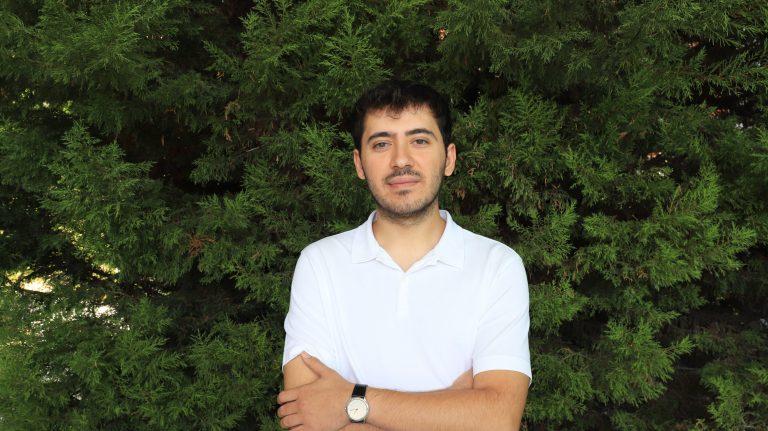
Eğitim
Lisans: İzmir Yüksek Teknoloji Enstitüsü, Makine Mühendisliği, 2020
Yüksek Lisans: İzmir Yüksek Teknoloji Enstitüsü, Makine Mühendisliği, (Devam Ediyor)
Çalışma Alanları
- Malzemelerin Statik ve Dinamik Mekanik Davranışları
- Malzeme Karakterizasyonu
- Malzemelerin Numerik Modellemesi
- +90 232 750 6624
- +90 232 750 6701
- Dinamik Test ve Modelleme Laboratuvarı
Araş. Gör. F. Murat Yıldıztekin
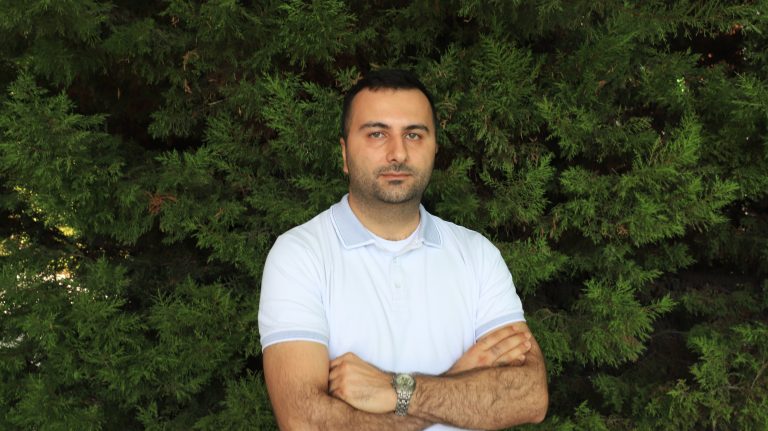
Eğitim
Lisans: Dokuz Eylül Üniversitesi, Makine Mühendisliği, 2019
Doktora: İzmir Yüksek Teknoloji Enstitüsü, Makine Mühendisliği, (Devam Ediyor)
Çalışma Alanları
- Balistik Kırılma Mekaniği
- Malzemelerin Yüksek Gerinim Hızlarında Deformasyon Davranışları
- Seramik Zırhlar
- Malzemelerin Numerik Modellemesi
- +90 232 750 6624
- +90 232 750 6701
- Dinamik Test ve Modelleme Laboratuvarı
Araş. Gör. Tuğrul Yılmaz

Eğitim
Lisans: İzmir Yüksek Teknoloji Enstitüsü, Makine Mühendisliği, 2020
Yüksek Lisans: İzmir Yüksek Teknoloji Enstitüsü, Makina Mühendisliği (Devam Ediyor)
Çalışma Alanları
- Mekanizma Tekniği
- +90 232 750 6795
- +90 232 750 6701
- Makina Mühendisliği Binası, İnsan Robot Etkileşimi Lab. (Z56)
